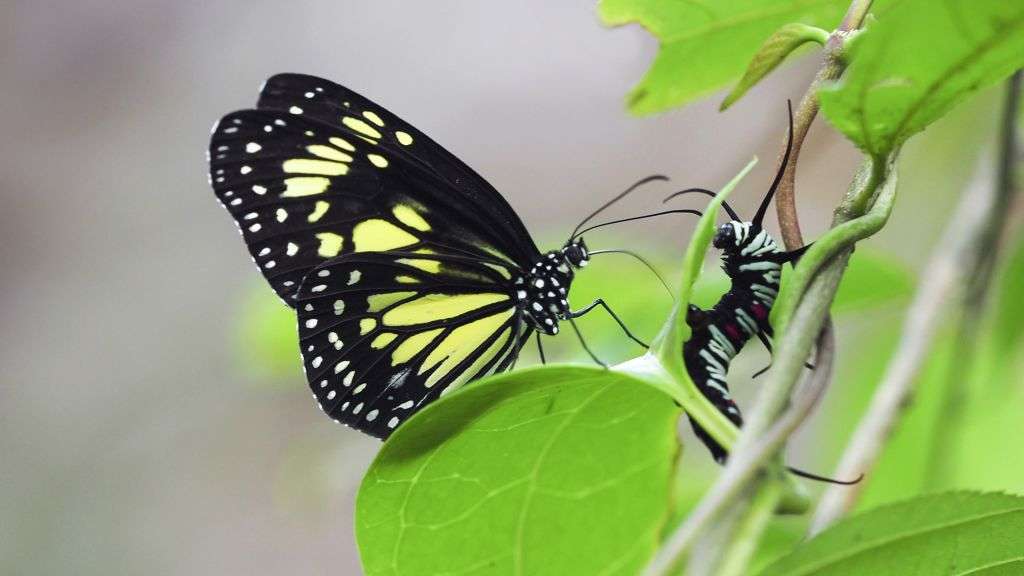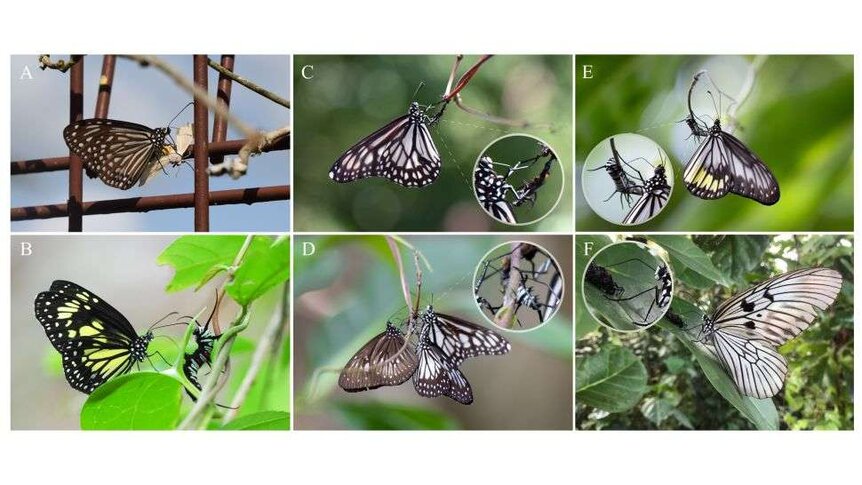Create a free profile to get unlimited access to exclusive videos, sweepstakes, and more!
Cannibal vampire butterflies attack their caterpillars, then suck out their guts

Butterflies are misrepresented in the media. Though you might think of them fluttering around in dreamy fantasies, look closer. Ever notice those compound eyes? That creepy proboscis? It gets worse.
Some butterflies don’t only look like horror movie stars, but are horrors in themselves. Milkweed butterflies (Danainae) — the same subfamily that includes the regal monarch — are vampiric cannibals that use clawed feet to tear open their own caterpillars and mercilessly suck the guts out of them. But why devour your own offspring from the inside out? It’s an even stranger phenomenon known as kleptopharmacophagy.
This behavior has never been seen in milkweed butterflies before. They usually claw at milkweed leaves so they can get the sap inside to ooze out, but then researcher Yi-Kai Tea, who led a study recently published in Ecology, noticed something disturbing in North Sulawesi, Indonesia. Adult male butterflies were inflicting gashes on caterpillars of the same species instead. Then they started to indulge.
“Milkweed butterflies have a natural predisposition for toxic plant-derived alkaloids, which they gather through leaf-scratching,” Tea told SYFY WIRE. “It is possible that to these milkweed butterflies, caterpillars are just an alternative, easily accessible source of alkaloids.”
If caterpillars are crawling repositories of alkaloid juice, adult butterflies are going to get more out of them (with less effort) than milkweed leaves. The chemicals are their main defense towards predators that would otherwise snap them up. They also give them a pheromone boost that makes them more attractive to females. Tea and her colleagues observed butterflies sucking at both live and dead caterpillars. Death was probably a mercy for those that didn’t survive, since the live ones were twisting and writhing around to avoid being eaten.
Kleptopharmacophagy was the term the researchers came up with to describe this behavior. It literally translates to “stealing for eating chemicals”. Somewhere between kleptomania (obsessive urge to steal) and necrophagy (feasting on dead organisms like caterpillar corpses), kleptopharmacophagy allows the butterflies to use the alkaloids they drink through that terrifying proboscis for defense and breeding purposes. Not only does this power up male pheromones, but they give more alkaloids to females in sperm packets when they mate.
If you really think about it, this is kind of like the reverse of Anne Rice’s vampires. Younger ones can sink their fangs into older, stronger blood drinkers to increase their own strength, though their code forbids murdering each other. There is also no consent involved with the butterflies.
“These alkaloids are either sequestered and stored as is, or used as precursors in metabolic pathways to produce new compounds,” Tea said. “Complex metabolic pathways in their bodies convert one substance into another.”
The alkaloids that Danainae drink are poisonous. Anything that might try getting one in its mouth may want to spit it out immediately, because these butterflies supposedly taste terrible. Most of them go for pyrrolizidine alkaloids. What makes them so toxic is the chemical compound DHPA, which is not harmful in itself, but becomes toxic when it binds to a cocktail of sulphur, nitrogen and oxygen in certain proteins. Milkweed plants evolved poison to protect against predators, but probably didn’t expect insects like butterflies to use it for the same purpose.
Whether milkweed butterflies in other parts of the world find caterpillars to be easy sources of poison and pheromones is still unknown. Monarchs have an evolutionary connection with alkaloids that influenced how another species evolved to ward off predators. The alkaloids they ingest are cardenolides, toxic steroids that can cause cardiac arrest, as caterpillars and keep them in their systems the rest of their lives. The viceroy butterfly is not even in the Danainae subfamily, but it appears so similar to the monarch that its built-in cosplay keeps it from ending up as prey.
Tea now wants to find out how rampant this behavior is among different species of milkweed butterflies, and if monarchs end up being busted, it could ruin a lot of childhoods.
“The next thing would be to see if this behavior is documented elsewhere outside of Sulawesi,” she said. “We would also like to test to see if these alkaloids are actually being transferred and passed down from larvae to adults through this scratch and feed method.”
We already have Mothra. Attack of the Monster Butterfly, anyone?



























